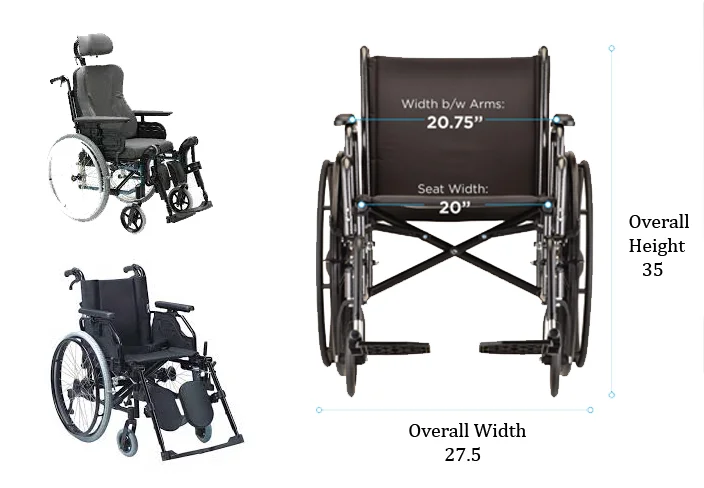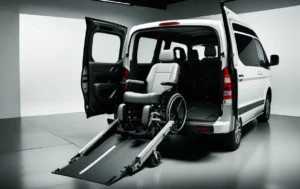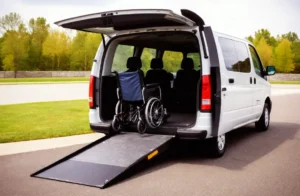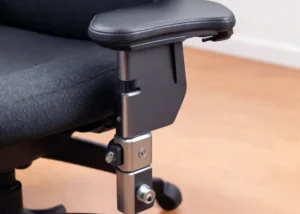
Wheelchair
The wheelchair, a symbol of mobility and independence, has revolutionized the lives of millions. Invented to empower those with limited mobility, it transcends its mechanical essence, becoming a conduit for freedom. A marvel of engineering, it embodies the fusion of functionality and compassion, enabling individuals to navigate a world that might otherwise seem daunting. More than a mere apparatus, the wheelchair is a gateway to inclusion, allowing its users to participate fully in the tapestry of life. It’s not just a means of movement; it’s a testament to human ingenuity and the unwavering spirit to overcome barriers. You will know the comprehensive understanding after reading this article. How wide is a wheelchair?
Different sizes of wheelchairs (How wide is a wheelchair?)
How wide is a wheelchair? Wheelchairs, like their users, come in a diverse array of sizes, each meticulously designed to cater to specific needs and preferences. From compact, nimble models tailored for easy maneuvering in tight spaces to robust, spacious ones built for comfort during extended use, the spectrum is vast. Pediatric wheelchairs embrace the charm of pint-sized adventurers, blending functionality with whimsical designs that turn mobility into an adventure.
In contrast, adult wheelchairs span the spectrum from ultra-light, folding options ideal for quick transitions to rugged, all-terrain models that conquer outdoor landscapes with ease. Bariatric wheelchairs, engineered for stability and durability, provide a sturdy solution for individuals requiring additional support.
Beyond physical dimensions, customizable features add another layer of diversity. Adjustable seat heights, reclining capabilities, and modular components allow for a personalized fit, ensuring that the wheelchair becomes an extension of the user’s body, seamlessly adapting to their lifestyle.
The evolution of wheelchair design reflects a commitment to inclusivity, acknowledging that one size does not fit all. These variations empower individuals with mobility challenges to choose a wheelchair that aligns with their unique requirements, fostering a sense of independence and self-expression in every roll.
Types of wheelchairs
Manual Wheelchairs
Manual wheelchairs rely on the user’s physical strength to propel themselves forward. They come in various styles, including standard rigid frames for durability, folding frames for convenience during transport, and lightweight options for easy maneuverability.
Power Wheelchairs
Powered by electric motors, power wheelchairs provide an alternative for individuals with limited upper body strength or endurance. These come with customizable controls, allowing users to navigate with precision and ease.
Sports Wheelchairs
Engineered for athletic pursuits, sports wheelchairs are designed to enhance performance in activities such as basketball, tennis, or racing. They boast lightweight frames, specialized wheels, and ergonomic seating to optimize agility and speed.
Pediatric Wheelchairs
Specially crafted for children, pediatric wheelchairs merge functionality with playful designs. These ensure comfort and safety for young users while fostering a positive attitude towards mobility.
All-Terrain Wheelchairs
All-terrain wheelchairs break free from the limitations of smooth surfaces. With rugged wheels and sturdy frames, they navigate challenging terrains, including gravel paths, grassy fields, and uneven surfaces.
Bariatric Wheelchairs
Built to accommodate individuals with higher weight capacities, bariatric wheelchairs prioritize stability and durability. They offer a secure and comfortable mobility solution for those requiring additional support.
Transport Wheelchairs
Compact and lightweight, transport wheelchairs are ideal for travel and temporary use. They often feature a caregiver-assist design, making them easy to push and maneuver.
Standing Wheelchairs
Innovative standing wheelchairs allow users to transition from a seated to a standing position. This promotes health benefits such as improved circulation, respiratory function, and enhanced social interaction.
Recommended door width for wheelchair access
To answer the quesiton “How wide is a wheelchair?”, you should also know recommended door width. For optimal wheelchair accessibility, the recommended door width is a minimum of 32 inches (81.28 cm). This width allows for smooth and unobstructed passage, accommodating various wheelchair sizes and styles.
The 32-inch standard is designed to ensure that individuals using wheelchairs can navigate doorways comfortably without facing challenges related to width restrictions. It also considers factors like the space required for a wheelchair user to approach the door, turn, and pass through without difficulty.
While 32 inches is the recommended minimum, wider doorways, such as 36 inches or more, are even more inclusive and can enhance accessibility for power wheelchairs, larger mobility devices, or individuals who may need extra space for maneuvering. Adhering to these recommended door widths not only meets accessibility standards but also promotes inclusivity and a barrier-free environment for everyone.
Narrow transport wheelchairs
Narrow transport wheelchairs offer a practical and efficient solution for navigating tight spaces and crowded environments. With a focus on streamlined design, these wheelchairs feature narrower frames, often around 22 inches or less, allowing for easy maneuverability in confined areas. Ideal for transport purposes, they excel in situations where standard wheelchairs may face challenges.
The compact nature of narrow transport wheelchairs makes them well-suited for use in narrow hallways, doorways, and crowded spaces like airports or public transportation. Despite their slim profile, these wheelchairs maintain a commitment to comfort and functionality, providing a convenient mobility solution for individuals with specific spatial constraints. For either temporary use or regular transport needs, these wheelchairs embody adaptability, ensuring that accessibility is not compromised in environments where space is at a premium.
Frequently Asked Questions
How wide are transport wheelchairs?
Transport wheelchairs typically have a narrower width compared to standard wheelchairs, ranging from 17 to 22 inches (43.18 to 55.88 cm). The compact design of these wheelchairs is intentional, emphasizing easy maneuverability in tight spaces and facilitating seamless transport. This narrower width allows for effortless navigation through narrow doorways, crowded areas, and other confined environments.
While sacrificing some of the width found in standard wheelchairs, transport wheelchairs prioritize practicality and convenience, making them an excellent choice for short-term use or situations where efficient mobility is paramount.
Which size of wheelchair do I need?
To determine the size of wheelchair you need, consider your body dimensions, mobility requirements, and the environments you’ll navigate. Measure the width of doorways and hallways at home. Standard adult wheelchairs are around 18 inches wide, but customizable options exist. If you require extra space, consider wider models.
For those with limited upper body strength, a power wheelchair might be suitable. Pediatric wheelchairs cater specifically to children. Consulting with a healthcare professional or mobility specialist can provide personalized guidance, ensuring your wheelchair aligns perfectly with your comfort, mobility needs, and lifestyle.
What door width is needed for a wheelchair?
For wheelchair accessibility, a door width of at least 32 inches (81.28 cm) is recommended. This width accommodates various wheelchair sizes and allows for smooth passage, ensuring individuals can navigate doorways comfortably. It considers not only the width of the wheelchair but also the space needed for approaching the door, turning, and passing through without hindrance. While 32 inches is the minimum standard, wider doorways, such as 36 inches or more, enhance accessibility further, accommodating larger wheelchairs and providing extra maneuvering space. Adhering to these guidelines fosters inclusivity and ensures a barrier-free environment for wheelchair users. This question is related to “How wide is a wheelchair?”.
How do make a doorway accessible for a wheelchair?
To make a doorway accessible for a wheelchair, ensure a minimum width of 32 inches. Remove obstacles and clutter near the entrance. Install lever-style handles for easy grip. Consider adding ramps for step-free access. Check for thresholds and use threshold ramps if necessary. Ensure proper lighting for visibility. Keep the doorway well-maintained to avoid tripping hazards. If possible, opt for wider doorways (36 inches or more) for enhanced accessibility. These modifications create a welcoming and barrier-free environment, facilitating seamless entry and exit for individuals using wheelchairs.
What is the narrowest wheelchair available?
This question is a sub-question of “How wide is a wheelchair”. The narrowest wheelchairs available typically have a width of around 16 to 18 inches (40.64 to 45.72 cm). These compact wheelchairs, often referred to as ultra-narrow or narrow-frame wheelchairs, are designed for navigating extremely tight spaces with ease. Their slim profiles make them suitable for use in narrow hallways, doorways, and crowded environments where standard wheelchairs may face limitations. While sacrificing some features found in wider models, these narrow wheelchairs prioritize maneuverability, making them an ideal choice for users who require efficient mobility in confined spaces or have specific spatial constraints.
Conclusion
The width of a wheelchair (How wide is a wheelchair?) is a crucial factor that significantly influences its usability and accessibility. It’s imperative to consider the width of doorways, hallways, and the user’s personal comfort. Wider doorways, typically 32 inches or more, enhance accessibility and ease of navigation. Whether it’s a standard wheelchair, a narrow transport model, or a specialized design, the width plays a pivotal role in ensuring that individuals with mobility challenges can move with comfort and independence in various environments.
We hope that you got the answer of the question “How wide is a wheelchair?.






